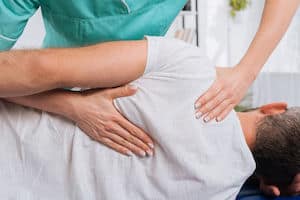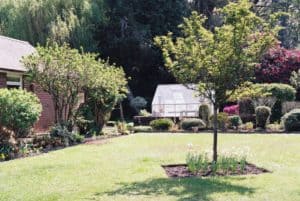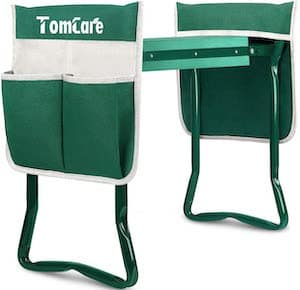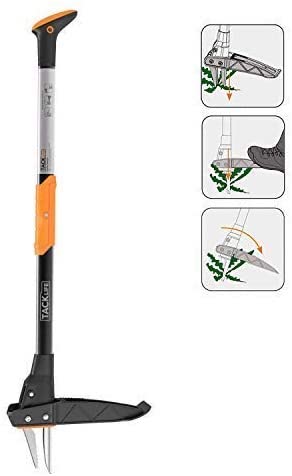Why Does My Lower Back Hurt After Gardening?
Gardening is hard work but it has the potential to promote healing through stress relief. Remember to take care of yourself when gardening and be aware of your limitations.
Why Does My Lower Back Hurt After Gardening? There are a three main reasons for lower back pain after gardening.
1. Remaining in a position that your back isn’t accustomed to being in for an extended period of time.
2. Is over exerting yourself by lifting more than you are able to lift while gardening.
3. Is improper twisting and turning and placing your lower back in an uncomfortable position.
Gardening can be a therapeutic and soothing hobby at the end of the day for many seeking a way to relieve stress. But for some, this hobby can be difficult due to chronic lower back pain.
What Can I Do About It?
Here are a few reliable solutions to help you manage lower back pain while gardening.
Tip 1. Take Steps to Prevent Lower Back Pain
If you are only beginning to experience lower back pain, you have the opportunity to prevent it from getting worse. Most effective forms of prevention in this sense are going to involve the activation of your lower back muscles in additional positions beyond the exercise of gardening.
Yoga and brisk walking, for example, are excellent choices. You can even practice these movements directly preceding gardening in the morning or evening. If that is too strenuous, even simply stretching out is an excellent alternative movement to employ. The main purpose behind this idea is to elevate your heart rate in order to warm up your muscles and prepare them for your gardening routine.
Tip 2. Improve Your Technique to Decrease Lower Back Pain
Simply being aware of the proper technique isn’t enough to ward off lower back pain for good. You must be constantly working towards improvement. If you aren’t sure what exactly this means, here are a few examples of proper physical technique to utilize when gardening.
-
-
- Bend at your knees, not at your waist – when you need to reach for something on the ground, it’s imperative that you avoid pulling from your lower back for strength. Bending at your knees will help with this. Additionally, you should focus on keeping your upper body straight and your chest facing forward (rather than down). Also, avoid twisting by keeping your shoulder lined up in the same direction as your hips. Assuming this posture encourages your muscles to work effectively the way you need them to.
- Be careful when lifting heavy objects – if an object requires significant effort or strain to lift off of the ground, then consider asking for help rather than attempting to pick it up on your own and risking injury. Another signal that you may need some help is if that object would not fit between the width of your knees. Now, if you believe lifting something weighty is well within your capability, then be certain to keep that weight as close to your body as possible. You don’t want the next flower pot you pick up the be the final straw that breaks your back. Holding an item close to your chest requires notably less force than holding that exact same item at arm’s length.
- Be gentle with your knees – when you are kneeling on the ground, be mindful of the amount of stress that your knees are bearing. When you start to feel any kind of discomfort, quickly transfer your weight onto the opposite knee or change your lowered position. Switching up your position frequently gives your joints and muscles frequent breaks which can prevent repetitive motion related injuries.
-
Tip 3. Diminish Gardening Back Pain By Pacing Yourself
If you try to do too much at once then the fact of the matter is that you will probably overexert yourself. For instance, don’t try to empty everything into the compost bin in one load. Take multiple trips to loosen your legs and lessen the strain on your back.
Take a daily inventory of how your body is feeling, and if it’s less than up to the task, have an afternoon off. Further, don’t work for longer than a few hours at a time. Most often, twenty to thirty minutes will be more than enough.
You might feel like you can accomplish anything at that moment you just don’t want to stop, but chances are you’ll be paying a painful price for that decision later. Gardening can be a positive experience if you approach it mindfully and remember to treat your body with respect.
Tip 4. Experiment With New Gardening Equipment to Help Back Pain
These days there are so many options outside of just a pair of gloves and a hand shovel. Technology has advanced in a remarkable way to truly satisfy the needs of the modern gardener. Here a few of the most helpful tools on the market today.
Garden seat – This is the first accessory on the list and it’s arguably the best one. Easy to handle and employ, you can find them at nearly any local hardware store. Essentially a small and sturdy seat with wheels, this helpful tool takes an immense amount of pressure away from your back by allowing you to sit. This completely takes away the burden of squatting, kneeling, and bending over. If you can’t afford to purchase a garden seat right away, try searching around your house for a compact stool or step and use that in the meantime. See the current pricing for a garden seat on Amazon: Current Amazon Price
![]() Weed remover – Weeding and gardening go hand in hand, but it is somewhat of a difficult task especially for those suffering from chronic lower back pain. And if you would prefer not to turn to pesticides to tame your garden, there is another answer. This tool is an upright weeder with a noteworthy long handle for hard to reach plants. You won’t have to lean and yank anymore with this helpful device. View the best selling weeder on Amazon: Current Amazon Price. Garden weeders are highly recommended by arthritis.org.
Weed remover – Weeding and gardening go hand in hand, but it is somewhat of a difficult task especially for those suffering from chronic lower back pain. And if you would prefer not to turn to pesticides to tame your garden, there is another answer. This tool is an upright weeder with a noteworthy long handle for hard to reach plants. You won’t have to lean and yank anymore with this helpful device. View the best selling weeder on Amazon: Current Amazon Price. Garden weeders are highly recommended by arthritis.org.
Elevated garden bed – This final product is something to consider if your condition has become emphasized enough that you’ve considered giving up gardening entirely. An elevated garden bed totally eliminates the problem of having to reach to the ground. Consider raising your garden a few feet off the ground with a fun DIY project, and you can get a little help with from a friend. This is a practical solution that is also aesthetically pleasing. You can paint the frame or add rails for hanging pots for an afternoon craft.

Tip 5. Receive Chiropractic Care to Fix Lower Back Pain When Gardening
Last but certainly not least, after you’ve tried out some of these tips and hopefully found them to be helpful, we’ve come to offer our final suggestion. One of the most effective ways to manage, minimize, and in some cases even remove lower back pain when gardening is to pay a visit to your local chiropractor. Chiropractors can address the problem right at the source because sometimes gardening isn’t the cause of the back or neck pain.
Through spinal manipulation and physical therapy, it’s possible for your chiropractor to treat and possibly even heal your lower back ailment. Sometimes this can take multiple visits over the course of a long period of time, so be patient with your chiropractor and follow his or her advice for what to do outside of the office.
Sometimes chiropractors will offer suggestions to assist in your recovery that may require dietary or other lifestyle changes. Often times patients will notice improvements after the very first appointment. If this sounds like something you may be interested in, then get in contact with your local chiropractic office today.
What should I do if nothing seems to help my lower back pain?
After all, is said and done, you might be doing everything in your power to ease your lower back pain with little or nothing to show for it. If you have begun practicing physical exercises or visiting a chiropractor, then you may be well on your way to recovery but also dealing with pain in the process. There are a few more remedies you can try to give yourself some relief from that pain. One method is to use hot or cold compresses. If you experience swelling, then a cold compress will be more beneficial than hot. This will help reduce inflammation. You can also ask a friend or partner to gently massage the area. This encourages blood flow leading to relaxation of the muscles.
Of course, medication is always an option as well. Over the counter pain relievers usually work just fine, although if necessary you can seek a prescription from a medical physician. Medication can yield positive results but it is sometimes accompanied by less than desirable side effects. Try out some of the other tips listed above over an extended period of time with consistency. You may be happy to find that you no longer feel the need to use medication to alleviate your pain. If you ever find yourself in a position where you feel aching, numbness or tingling along with your back pain, then it’s time to stop gardening immediately and seek medical assistance. This could be a sign of a much more serious issue. Continuing to labor in the face of these symptoms could cause serious and permanent damage.




